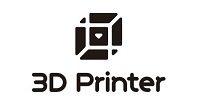Introduction
3D printing has revolutionized the manufacturing industry, allowing individuals and businesses to create intricate and customized objects. However, like any technology, it is not without its challenges. In this detailed guide, we will explore some of the most common issues that arise during 3D printing and provide troubleshooting tips to help you overcome them.
Poor Print Quality
One of the most frustrating issues in 3D printing is poor print quality. This can manifest as rough surfaces, visible layer lines, or inconsistent extrusion. To address this problem, consider the following:
Check Bed Leveling
Ensure that your print bed is properly leveled. An uneven bed can lead to adhesion issues and affect the overall print quality. Use a leveling tool or follow your printer’s instructions to achieve an even bed.
Adjust Printing Speed
Printing too fast can result in poor print quality. Slow down the printing speed to allow the layers to properly bond and reduce the chances of errors.
Calibrate Extruder Steps
Incorrect extruder steps can cause under or over-extrusion, leading to poor print quality. Calibrate your extruder steps to ensure accurate filament flow.
Warping and Lifting
Warping and lifting occur when the corners of your print start to curl or detach from the print bed. This issue is commonly caused by improper bed adhesion and temperature fluctuations. Here’s how to troubleshoot it:
Use a Heated Bed
If your printer has a heated bed, ensure that it is set to the appropriate temperature for the filament you are using. This will help improve bed adhesion and reduce the chances of warping.
Apply Adhesive or Use a Print Surface
Applying adhesive, such as hairspray or glue stick, to the print bed can enhance bed adhesion. Alternatively, consider using specialized print surfaces like PEI sheets or BuildTak for better adhesion and reduced warping.
Summary
3D printing can be a complex process, and it is not uncommon to encounter problems along the way. This guide aims to provide a comprehensive overview of the most common issues faced by 3D printing enthusiasts and offers practical solutions to troubleshoot them. From issues related to bed adhesion and filament quality to problems with layer adhesion and print warping, we will cover a wide range of topics to help you diagnose and resolve these issues effectively.
By understanding the root causes of these problems and implementing the suggested troubleshooting techniques, you will be able to improve the overall quality of your 3D prints and achieve the desired results. Whether you are a hobbyist, a professional, or someone who is here are the findings simply curious about 3D printing, this guide will serve as a valuable resource to enhance your printing experience and overcome common challenges.
- Q: Why is my 3D print not sticking to the build plate?
- A: There could be several reasons for this issue. Firstly, ensure that the build plate is clean and free from any debris. Additionally, check the leveling of the build plate to ensure it is properly aligned. Finally, consider adjusting the printing temperature and using a suitable adhesive such as a glue stick or a specialized print bed adhesive.
- Q: How can I fix under-extrusion in my 3D prints?
- A: Under-extrusion, where the printer fails to extrude enough filament, can be resolved by checking the nozzle for any clogs or obstructions. It is also important to ensure that the filament is properly loaded and feeding correctly. Adjusting the printing temperature and increasing the extrusion multiplier in the slicer software can also help alleviate under-extrusion issues.
- Q: What should I do if my 3D print has stringing or oozing?
- A: Stringing or oozing occurs when the printer leaves thin strands of filament between different parts of the print. To address this issue, try adjusting the retraction settings in the slicer software to reduce the amount of filament being pulled back when moving between print areas. Additionally, lowering the printing temperature and increasing travel speed can help minimize stringing.
- Q: How do I resolve layer shifting in my 3D prints?
- A: Layer shifting, where the layers of the print are misaligned, can be caused by various factors. Check that the belts and pulleys of the printer are properly tightened and aligned. Ensure that the print bed is level and stable. Additionally, reducing the printing speed and enabling features like acceleration control in the printer’s firmware can help mitigate layer shifting issues.
- Q: What can I do to eliminate warping in my 3D prints?
- A: Warping, where the corners or edges of the print lift or curl, can be minimized by ensuring proper bed adhesion. Use a heated bed if available and apply a suitable adhesive like hairspray or a print bed adhesive. Enclosing the printer or using a heated enclosure can also help maintain a consistent temperature, reducing the chances of warping.</dd

Welcome to my website! My name is Noah Embry, and I am a passionate Dental Public Health Specialist with a strong interest in prototyping essentials, 3D printing techniques, design software reviews, and custom fabrication tips. I am thrilled to share my knowledge and expertise in these areas with you.
